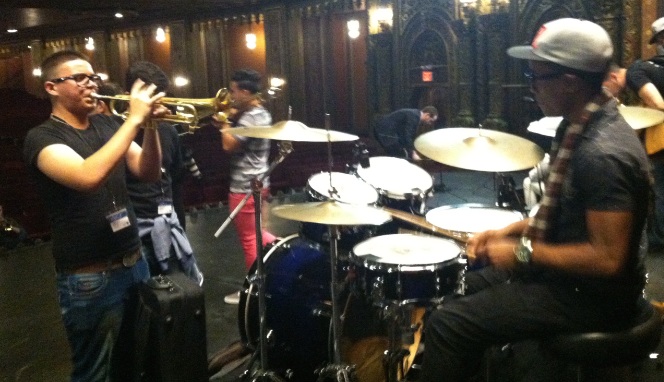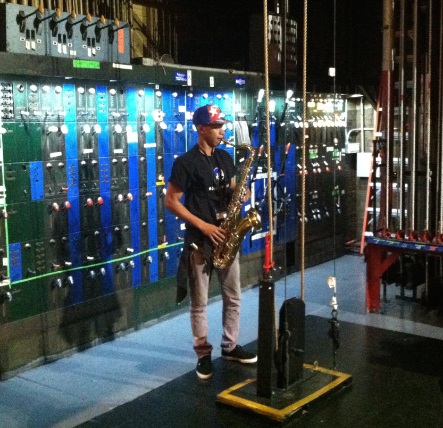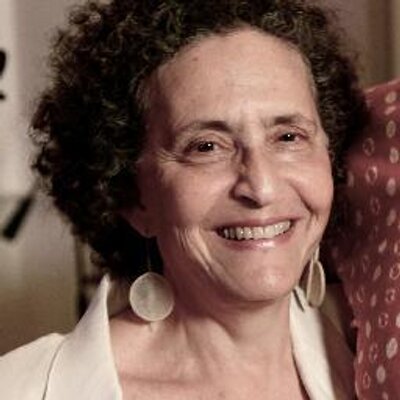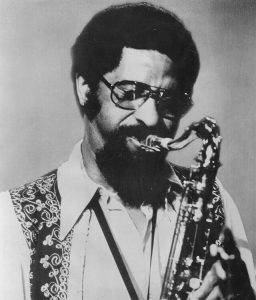Afro-Cuban culture, Blog, Cuba, Cuban Jazz, Latin Jazz, Video and audio
“Irakere” is a Yoruban word that means virgin forest, a wild place unspoiled by civilization.
Tracking this band, its history, evolution and personnel changes would take a web site all by itself.
A short version of their story:
Jazz was not smiled upon by the government in Cuba in the 60s and 70s. The powers that be felt it smacked of imperialism and capitalism.
However, in order to cater to visitors and their expectations, the government underwrote a group called Orquesta Cubana de Música Modern that played American music.
In 1973, members of the Orquesta broke away to form Irakere. The founders included pianist Chucho Valdés, saxophonist Paquito D’Rivera, trumpet player Jorge Varona, guitarist Carlos Emilio Morales, bassist Carlos del Puerto, drummer Bernardo García, and percussionist and singer Oscar Valdés II.
In 1977, the group performed at two “Iron Curtain” festivals, the Belgrade Jazz Festival and the Warsaw Jazz Jamboree where they had the chance to meet Betty Carter, Mel Lewis and Thad Jones.
Later that year Dizzy Gillespie, Stan Getz, Earl Hines and other American musicians visited Cuba on a “jazz cruise,” the first time jazz musicians visited Cuba since the break in diplomatic and trade relations in 1961. Gillespie and Getz jammed with the members of the band.
In 1980 with Gillespie’s help, the group won spots on at the Newport Jazz Festival in New York City and the Montreux Jazz Festival in Switzerland and their international career was launched.
The recordings of those shows were packaged by both CBS Records (JC-35655) and EGREM (Areíto LD-3769) and won the Grammy in the 22nd Annual Grammy Awards for Best Latin recording.
The concert above was recorded at the Capital Theater in Jersey City, New Jersey on March 23, 1979 in the middle of their commercial break out.
(Make sure you watch through to the end when the group takes the music right into the audience.)
Personnel:
Carlos del Puerto, bass
Carlos Morales, electric guitar
Enrique Pla, drums
Jorge Alfonso El Niño, conga drums
Oscar Valdés, vocal and Cuban percussion
Armando Cuervo, vocal and Cuban percussion
Jorge Varona, trumpet, flugelhorn and vocal
Arturo Sandoval, trumpet, flugelhorn, valve trombone, vocal, arranger
Paquito D’Rivera, flute, alto sax, soprano sax, baritone sax, arranger
Carlo Averoff, soprano sax, tenor sax, flue, piccolo
Chucho Valdés, arranger, composer, keyboards, band leader
We have two more videos from this period.
One from Venezuelan television which we believe was recorded in 1979.
We also have one from 1977 when many of the cats were still in their twenties.
From Venezuelan television – c. 1979
Personnel:
Arturo Sandoval, trumpet
Jorge Varona, trumpet and vocals
Chucho Valdés, keyboards
Carlos Averhoff, saxophone
Carlos del Puerto, bass
Enrique Pla, timbales
Jorge Alfonso El Niño, conga drums, vocals
Armando Cuervo, percussion and vocals
Oscar Valdés, percussionist and vocals
Paquito D’Rivera, not on this recording
Filmed in 1977
– Ken McCarthy
Jazz on the Tube
P.S. Our unique programming is made possible by help from people like you. Learn how you can contribute to our efforts here: Support Jazz on the Tube
Thanks.
Afro-Cuban culture, Blog, Cuba, Video and audio
This program is part of a series of radio documentaries on the musical culture of Cuba produced by Ned Sublette, author of “Cuba and Its Music”, for AfroPop Worldwide.
The program is built around the work of Dr. Ivor Miller, the only scholar to have gained access both to the Abakua society in Cuba, a social phenomenon unique to Havana and Matanzas, and to the mother culture in present-day Nigeria and southwestern Cameroon.
Interwoven with the conversation with Miller, Ned offers examples of how Abakua members continuously influenced the development of popular Cuban music.
Here are the original notes from the program:
The leopard cult of ekpe in Calabar, in present-day Nigeria and southwestern Cameroon, has one of the most unique performance traditions in all of Africa–a complex theatrical tradition, referred to in calabar English as “play,” which encompasses a cycle of sacred dramas that takes many years to execute.
The music of this society is almost completely unknown outside the region, because it was not recorded until the 1980s.. This program will feature Calabar-themed recordings by artists including Sexteto Habanero, Chano Pozo, Arsenio Rodriguez, and Los Munequitos de Matanzas.
– Ken McCarthy
Jazz on the Tube
P.S. Our unique programming is made possible by help from people like you. Learn how you can contribute to our efforts here: Support Jazz on the Tube
Thanks.
Blog, Cuba, Cuban Jazz, Latin Jazz, Video and audio
This one-camera, no-edits video was shot by Al Carmona (Albert P. Camona) at the The University of the Arts of Cuba / Instituto Superior de Arte (ISA) and posted to YouTube in 2006.
ISA was founded September 1, 1976, by the Cuban government as the national school for the arts.
The soloists are:
Jorge Vistel (trumpet)
Regis Molina is described in the YouTube notes as playing “alto sax”, but since the primary saxophone in this performance is a baritone, I’m going to guess that the author meant baritone sax.
The composition “Moanin'” is by Charles Mingus and first appeared on the album “Blues and Roots” recorded on February 4, 1959 at Atlantic Studios in New York City.
– Ken McCarthy
Jazz on the Tube
P.S. Our unique programming is made possible by help from people like you. Learn how you can contribute to our efforts here: Support Jazz on the Tube
Thanks.
Blog, Cuba, The Cuba-US connection, Video and audio
WKZE’s Susan Shaw, host of “Saturday Gumbo”, interviews me about the secret Cuban roots of rock and roll.
– Ken McCarthy
Jazz on the Tube
P.S. Our unique programming is made possible by help from people like you. Learn how you can contribute to our efforts here: Support Jazz on the Tube
Thanks.
Blog, Cuba, Cuban Jazz, Latin Jazz, The Cuba-US connection, Video and audio
Last week we interviewed Jana La Sorte, managing director of Horns to Havana.
Unfortunately, we missed their Jazz at Lincoln Center performance (we’ll post the video if it ever becomes available), but we did make it to their performance the next day at the United Palace of Cultural Arts at 175th Street and Broadway.
The audience were New York City school children ages six to ten, many of them bilingual English and Spanish speakers.
The orchestra played some classic numbers and arrangements by greats like Benny Carter and Glenn Miller. Then they did some Cuban numbers at which point the little ones jumped up and started dancing. This is what it’s all about.

The United Palace really is a palace. A former movie palace built in 1930, it’s been kept in
pristine condition and hosts many cultural events.

We met this young trumpet player David Navarro in Havana and were delighted to see
him again this time playing in New York. His first time out of the country.

Back stage warming up the tenor
– Ken McCarthy
Jazz on the Tube
P.S. Our unique programming is made possible by help from people like you. Learn how you can contribute to our efforts here: Support Jazz on the Tube
Thanks.
Afro-Cuban culture, Blog, Cuba, Jazz on the Tube Interview, People, Producer-Presenters, Video and audio
If you’re interested in world music, you probably have experienced the impact of Verna Gillis’s work.
From 1972 to 1978 she recorded music in Afghanistan, Iran, Kashmir, Cuba, Haiti, the Dominican Republic, Peru, Surinam, and Ghana.
Twenty-five of her recordings have been released by Smithsonian Folkways and Lyrichord.
In 1979, she opened Soundscape in New York City, long before the concept of “world music” was popular.
In this interview we talk about Verna’s field recordings in Cuba in the 1970s and her work with Cuban musicians in New York in the early 1980s.
Interview
Download the mp3 here

Gems from Verna’s Soundscape archive
Daniel Ponce Latin Jazz Jam
“Caravan” – June 23, 1981
Download the mp3 here
Celia Cruz and band: Daytime rehearsal
“Hay Caridad” – November 18, 1985
Download the mp3 here
Siboney – Daniel Ponce
New York is Now! (1983)
Basta de Cuentos’
From “New York Now” by Daniel Ponce
Liner notes from the Folkways album “Music of Cuba” referenced in this interview: Music of Cuba liner notes.
You can learn more about Verna’s work here.
– Ken McCarthy
Jazz on the Tube
P.S. Our unique programming is made possible by help from people like you. Learn how you can contribute to our efforts here: Support Jazz on the Tube
Thanks.
Go to Cuba with Jazz on the Tube as your guide:
Click here for details






